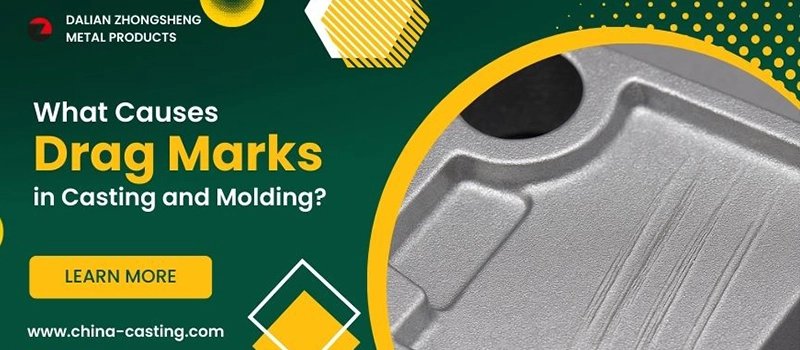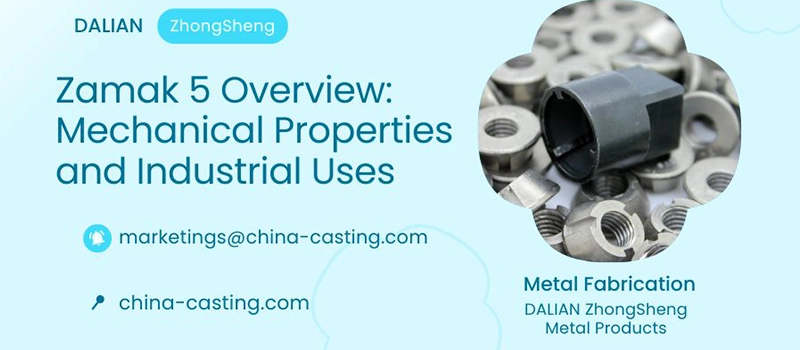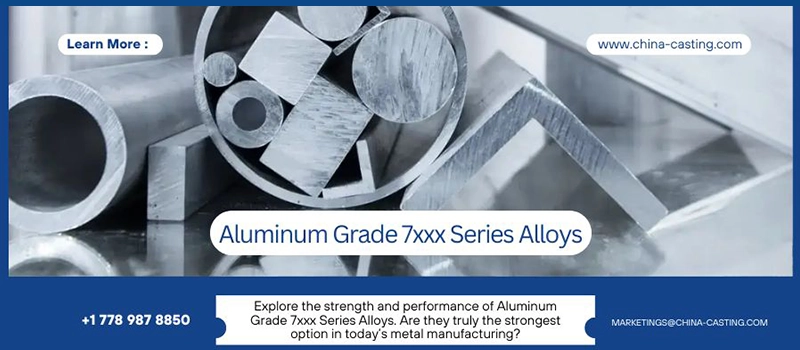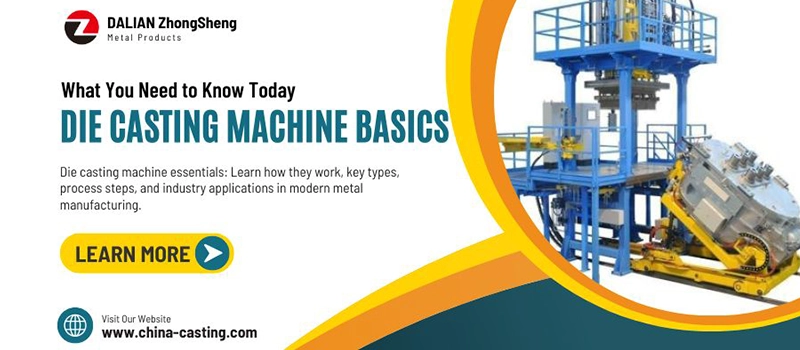Are you struggling to understand how the carbon steel melting point affects your manufacturing process? Confused by varying temperatures across steel grades? Wondering what temperature range is right for your project — and what could go wrong if you choose wrong?
The carbon steel melting point is not just a number. It’s a critical factor that influences casting, welding, forging, and heat treatment. Whether you’re using low, medium, or high carbon steel, understanding how its melting point works helps you select materials wisely, improve production quality, and avoid costly failures.
Your project’s success depends on more than just equipment — it depends on knowledge. Let’s unlock the science behind carbon steel melting points and explore why it matters more than you think.
What Is the Carbon Steel Melting Point and Why It Matters in Industry
In metal manufacturing, every degree matters. That’s especially true when working with carbon steel — a material prized for its strength, cost-efficiency, and versatility across construction, automotive, and heavy equipment industries. But have you ever asked yourself: what exactly is the melting point of carbon steel? More importantly, why should this temperature range be a key part of your design and production decisions?
The melting point of carbon steel isn’t a fixed value. Unlike pure iron, which melts at about 1538°C (2800°F), carbon steel is an alloy — primarily iron mixed with carbon and other elements. This alloying changes its thermal behavior, giving it a melting range between 1425°C and 1540°C (2597°F to 2800°F) depending on the carbon content and alloying additives.

🔍 Why Carbon Steel Has a Melting Range, Not a Single Point
In practical metallurgy, carbon steel passes through two key thermal stages:
- Solidus: the temperature where melting begins (partial melt)
- Liquidus: the temperature where it’s fully molten
For example, low carbon steel (with ~0.05–0.25% carbon) starts melting near the top end of the range, while high carbon steel (with 0.6–1.5% carbon) starts melting sooner due to structural changes in the iron lattice caused by more carbon.
This is why the term “carbon steel melting point” is a simplification. In reality, you’re dealing with a range, and small composition differences can have significant effects in high-temperature industrial applications.
🏭 Why This Matters in Manufacturing
So why is knowing this melting range so critical?
Because every major process that involves carbon steel depends on heat — and how the material behaves as it approaches that heat threshold. Here’s why it matters:
✔ Welding
A welder must maintain enough heat to allow fusion without exceeding the liquidus point, which would cause distortion, burn-through, or weakened joints.
✔ Casting
In foundries, carbon steel must be poured at the right viscosity. If the melting range isn’t respected, you’ll see incomplete fills, porosity, or surface defects.
✔ Forging & Forming
If the steel is overheated beyond its solidus phase, it may crack or lose its grain integrity. If it’s underheated, it becomes too brittle to shape.
✔ Machining
Thermal build-up during machining can cause phase transformations in the heat-affected zone (HAZ), hardening the surface and reducing tool life.
✔ Heat Treatment
Processes like annealing, quenching, and tempering must be performed below the melting range but close enough to cause structural changes without liquefying the material.
In short, controlling temperature relative to the carbon steel melting point is the difference between a precision component and a failed part.
⚠️ Implications for Quality Control
Engineers, suppliers, and manufacturers — especially those sourcing carbon steel from overseas factories — must account for the melting point when setting:
- Furnace temperatures
- Holding times
- Welding currents
- Cooling rates
Mistakes in these areas can lead to warped parts, cracked welds, tool breakage, or even catastrophic failures in service. That’s why understanding the melting point is not just a materials science issue — it’s a production and profitability issue.
Melting Points of Low, Medium, and High Carbon Steel Explained
Not all carbon steel is created equal — and that’s especially true when it comes to how it melts.
While the phrase “carbon steel melting point” is often thrown around as if it refers to a single temperature, the truth is much more nuanced. The melting behavior of carbon steel varies significantly based on its carbon content, and understanding these differences is essential for anyone involved in fabrication, welding, forging, or product design.
Let’s break it down by carbon content classification, and explore how each category behaves under heat.
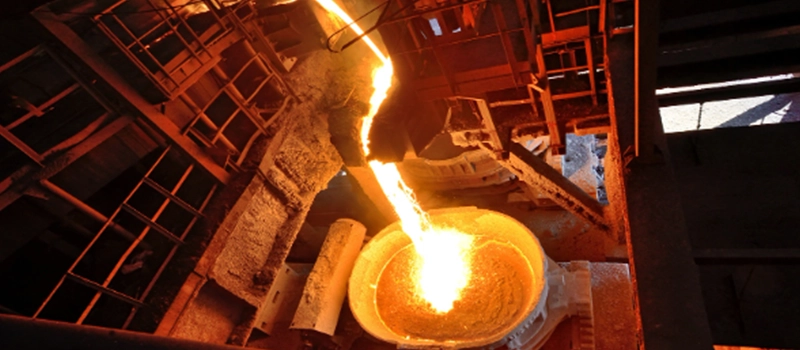
🔹 Low Carbon Steel Melting Point (Mild Steel)
Carbon Content: ~0.05% to 0.25%
Melting Range: 1490°C to 1540°C (2714°F to 2800°F)
Low carbon steel — often called mild steel — is widely used due to its excellent ductility, machinability, and low cost. Because of its low carbon content, it retains a structure similar to pure iron, which has a relatively high melting point (around 1538°C).
This means:
- It maintains structural stability at high temperatures
- It’s more forgiving during processes like welding and hot rolling
- It resists premature melting or sagging in forming operations
This makes it ideal for:
- Structural beams
- Automotive bodies
- General-purpose machinery
- Sheet metal components
In high-heat environments, mild steel’s higher melting range helps preserve mechanical strength, provided proper heat control is maintained.
🔸 Medium Carbon Steel Melting Point
Carbon Content: ~0.25% to 0.60%
Melting Range: 1460°C to 1490°C (2660°F to 2714°F)
Medium carbon steel bridges the gap between formability and strength. As the carbon percentage increases:
- The material becomes stronger and harder
- It gains wear resistance
- But it also becomes less ductile and starts to melt at a slightly lower temperature
This drop in melting range is due to the formation of cementite (Fe₃C) and a shift in the steel’s microstructure. These changes affect the steel’s thermal conductivity and phase transformation characteristics, narrowing the process window for:
- Forging
- Heat treatment
- Welding (requires preheating to prevent cracking)
Medium carbon steels are commonly used in:
- Gears
- Shafts
- Railway wheels
- Axles
- Crankshafts
Precision heating is critical here — too little heat and the steel becomes brittle; too much, and you risk grain growth or melt damage.
🔺 High Carbon Steel Melting Point
Carbon Content: ~0.60% to 1.5%
Melting Range: 1425°C to 1460°C (2597°F to 2660°F)
High carbon steel contains enough carbon to significantly alter its microstructure and lower its melting point. At this level, steel becomes:
- Extremely hard and wear-resistant
- More brittle
- Much more sensitive to thermal changes
The lower melting point arises from the denser carbide structures and increased segregation of carbon, which interfere with the uniform melting of the alloy.
Due to these properties, high carbon steel is typically used for:
- Cutting tools
- Dies and punches
- Blades and knives
- Springs
However, these applications demand precise thermal management, especially during:
- Heat treatment (hardening & tempering)
- Surface finishing
- Machining and grinding
Exceeding the melting range during processing can destroy the hardness or cause cracks, warping, and even catastrophic part failure.
📊 Summary Table: Carbon Steel Grades vs Melting Ranges
| Steel Type | Carbon % | Melting Range (°C) | Melting Range (°F) |
|---|---|---|---|
| Low Carbon Steel | 0.05–0.25% | 1490–1540°C | 2714–2800°F |
| Medium Carbon Steel | 0.25–0.60% | 1460–1490°C | 2660–2714°F |
| High Carbon Steel | 0.60–1.5% | 1425–1460°C | 2597–2660°F |
⚙️ Practical Tips for Working with Each Grade
- Low carbon steel: Ideal for beginners, tolerant to overheating, easy to weld
- Medium carbon steel: Requires preheating before welding, best used when both strength and ductility are needed
- High carbon steel: Only for experienced users; needs strict control over heating and cooling cycles
Choosing the wrong grade without considering its melting behavior can lead to:
- Cracking in welds
- Grain boundary weakness
- Uncontrolled warping
- Tool damage during machining
What Factors Influence the Melting Point of Carbon Steel?
The carbon steel melting point is not fixed — even for the same grade, subtle differences in composition or processing can slightly shift the melting range. This variability isn’t random; it’s rooted in scientific principles and metallurgical behaviors. In this section, we’ll explore the key factors that influence the melting point of carbon steel and why even minor variations can affect performance in real-world applications.

🧪 1. Carbon Content: The Primary Variable
The carbon percentage in steel is the most critical factor influencing its melting range.
- As carbon increases, melting point decreases.
- This is due to the formation of iron carbide (Fe₃C), which disrupts the iron lattice and lowers the energy needed for the material to transition from solid to liquid.
For example:
- Pure iron melts at 1538°C
- Low carbon steel (0.10% C) might melt near 1525°C–1540°C
- High carbon steel (1.0% C) might begin melting as low as 1425°C
Carbon not only affects thermal behavior but also mechanical properties such as:
- Hardness
- Tensile strength
- Brittleness
- Wear resistance
The trade-off is simple: more carbon = harder steel, but lower melting point.
🔩 2. Alloying Elements: Enhancers and Modifiers
Beyond carbon, other alloying elements play important roles. They can raise or lower the melting point depending on their interaction with iron and carbon.
| Element | Effect on Melting Point | Purpose in Alloy |
|---|---|---|
| Manganese (Mn) | Slightly lowers | Improves strength and hardenability |
| Silicon (Si) | Slightly raises | Enhances magnetic properties and toughness |
| Chromium (Cr) | Raises | Improves corrosion and heat resistance |
| Nickel (Ni) | Raises | Increases ductility and impact strength |
| Molybdenum (Mo) | Raises | Improves high-temperature strength |
| Sulfur (S) & Phosphorus (P) | Lowers (and weakens) | Considered impurities in high-performance steels |
In particular, stainless steels (which are iron alloys with ≥10.5% chromium) can have higher or lower melting points than carbon steel depending on their formulation — more on that in the next section.
🔁 3. Phase Structures and Thermal Behavior
The internal structure of steel — also called its crystal phase — changes as temperature increases. This structure influences how heat flows through the metal and when it transitions to a liquid.
Carbon steel typically passes through these phases:
- Ferrite (α-Fe): stable at room temperature, low carbon solubility
- Austenite (γ-Fe): forms at higher temps (~727°C and above), can dissolve more carbon
- Cementite (Fe₃C): hard, brittle, affects melting negatively
- Perlite / Bainite: microstructures that form during cooling; they don’t exist at melt stage but affect behavior before melting
During heating, steel doesn’t melt immediately when it hits the solidus temperature. Instead, some grains begin melting while others remain solid — a phase known as partial melting. This stage is critical in casting, as uneven melting leads to porosity, cracks, or segregation in the solidified product.
⚠️ 4. Impurities and Inclusions
Unwanted elements like:
- Sulfur
- Phosphorus
- Oxygen
- Non-metallic inclusions (silicates, oxides, etc.)
…can lower the melting point, disrupt grain structure, and cause uneven heat distribution.
Impurities:
- Create localized melting zones, leading to hot cracks
- React with carbon at high temps, forming gas bubbles or voids
- Undermine strength and increase failure risk during welding or casting
This is why high-purity steel grades (e.g. for aerospace or medical tools) are more expensive — they must undergo strict refining to control melt behavior precisely.
🌡️ 5. External Conditions: Pressure and Atmosphere
Under vacuum or low-pressure environments (e.g., in vacuum induction furnaces), carbon steel may melt at slightly different temperatures.
- Lower pressure reduces boiling point and can shift melting point slightly
- In oxygen-rich environments, surface oxidation (scaling) can interfere with heat flow
- Protective atmospheres (argon, nitrogen) in furnaces help maintain consistent melting behavior
These variables are especially relevant in advanced manufacturing environments like:
- Aerospace forging
- Tool steel production
- High-performance automotive components
🔎 6. Thermal History and Processing
Carbon steel’s previous exposure to heat can also affect how it melts in subsequent cycles.
- Cold-worked steel may behave differently than annealed steel
- Grain size and distribution from prior heat treatments influence thermal conductivity
- Steel that’s been hardened or tempered may experience uneven melting if not uniformly treated
That’s why steel with identical chemical composition can melt differently depending on how it was processed before.
Carbon Steel Melting Point vs Other Metals: A Practical Comparison
Understanding the carbon steel melting point is important — but to truly appreciate its value, you need to see how it compares with other common industrial metals. Every metal behaves differently under heat, and knowing these differences helps engineers, designers, and procurement teams select the right material for the job.
Let’s explore how the melting point of carbon steel compares with stainless steel, cast iron, aluminum, zinc, and even carbon fiber — and why those differences matter in real-world applications.
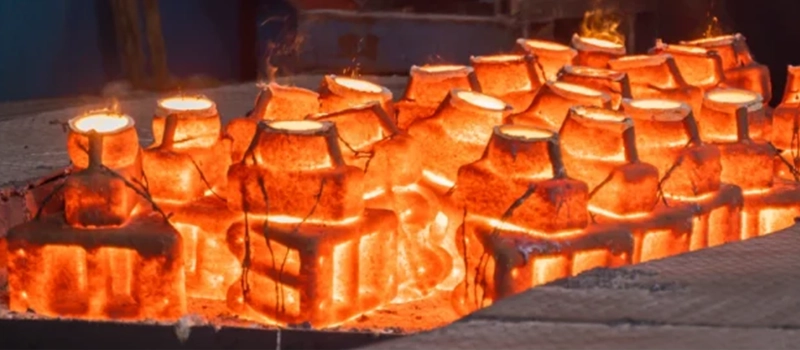
🆚 Carbon Steel vs Stainless Steel: What’s the Difference in Melting Point?
At first glance, you might think stainless steel — being more expensive — would automatically perform better under heat. That’s not always the case.
- Carbon steel melting point: 1425–1540°C
- Stainless steel melting point: 1375–1530°C
Despite being an alloy rich in chromium (usually 10.5% or more), stainless steel often has a slightly lower melting point than carbon steel, especially in austenitic grades like 304 or 316. This is due to the influence of:
- Chromium, which disrupts the iron-carbon lattice
- Nickel and molybdenum, which affect phase stability
This makes carbon steel more heat-resistant in some applications — particularly where high thermal loading is present without corrosion concerns (e.g., automotive suspension components, industrial blades).
⚙️ Carbon Steel vs Cast Iron: Surprising Thermal Behavior
Cast iron contains more than 2% carbon, along with silicon and other elements. You might expect a higher carbon content to raise the melting point — but it’s the opposite.
- Cast iron melting point: 1200–1300°C
- Carbon steel melting point: 1425–1540°C
Why? Because high carbon content in cast iron leads to:
- Graphite formation, which lowers melting temp
- Brittle phases that break apart more easily under heat
That’s why cast iron is favored for easy casting into complex shapes but is rarely used where high heat resistance is required. Carbon steel’s higher melting point makes it better for:
- Structural applications
- Heat exchangers
- Forging components
⚙️ Carbon Steel vs Aluminum and Zinc: Lightweight but Low-Melting
Let’s look at metals often used for light-duty or non-structural applications.
| Metal | Melting Point (°C) | Melting Point (°F) |
|---|---|---|
| Carbon Steel | 1425–1540°C | 2597–2800°F |
| Aluminum | ~660°C | ~1220°F |
| Zinc | ~419°C | ~786°F |
As you can see:
- Aluminum and zinc melt at less than half the temperature of carbon steel
- This makes them ideal for die casting, heat sinks, and consumer products
- But unsuitable for high-stress or high-heat applications
So if you’re selecting a material for engine blocks, structural brackets, or valves exposed to thermal cycling, carbon steel’s higher melting point is a decisive advantage.
🧵 Carbon Steel vs Carbon Fiber: A Totally Different Game
Many people ask: “What about carbon fiber — does it melt?”
Here’s the truth:
- Carbon fiber does not melt like metals do
- It decomposes at around 3600°C in inert environments
- But in oxygen-rich environments (like air), it oxidizes rapidly above 400°C
That means:
- Carbon fiber is not suitable for high-temperature metalworking
- It’s great for aerospace, sports, or structural applications where strength-to-weight is key — but not where fire or sustained heat is involved
This gives carbon steel melting point superiority when both heat and load-bearing strength are required.
📊 Visual Comparison Table: Melting Points Across Materials
| Material | Melting Point (°C) | Melting Point (°F) |
|---|---|---|
| Carbon Steel | 1425–1540°C | 2597–2800°F |
| Stainless Steel | 1375–1530°C | 2507–2786°F |
| Cast Iron | 1200–1300°C | 2192–2372°F |
| Aluminum | 660°C | 1220°F |
| Zinc | 419°C | 786°F |
| Carbon Fiber | N/A (decomposes) | N/A |
How the Carbon Steel Melting Point Guides Material Selection and Design
The carbon steel melting point is more than just a material property tucked away on a datasheet — it directly influences how engineers select, design, and process components across industries like construction, mining, petrochemical, transportation, and machinery manufacturing.
In this section, we’ll explore how understanding carbon steel melting point can help you make smarter material choices, improve part performance, and reduce production risks.
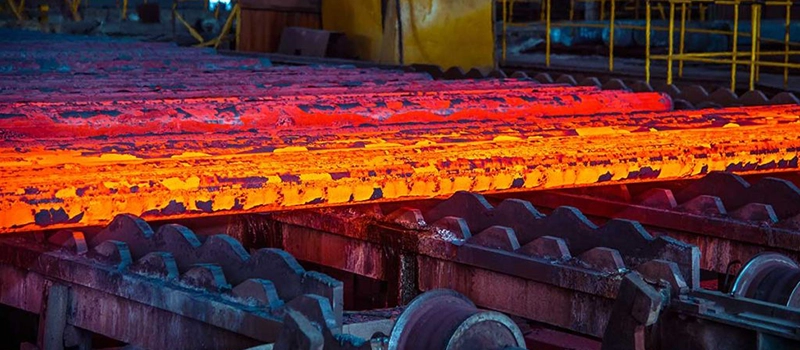
🏗️ 1. Matching Melting Point to Operating Temperatures
The first rule in material selection: the chosen material must withstand the maximum temperature expected during service — with an added safety margin.
For example:
- If you’re designing a component exposed to continuous temperatures of 900°C, and your steel melts at 1425°C, you’re generally safe.
- However, if localized heating spikes the temperature above 1100–1200°C (as in friction or arc exposure), you may risk entering the softening zone — where mechanical strength drops dramatically even before full melting.
In such cases, you may:
- Choose a medium-carbon steel that offers better heat resistance
- Apply heat treatment to improve thermal fatigue behavior
- Or switch to an alloy steel with elements like Mo or Cr to increase thermal stability
In either case, your design must start with the melting point in mind.
🔩 2. Avoiding Deformation, Warping, and Failure
The carbon steel melting point is crucial in predicting the risk of:
- Thermal deformation during casting and forming
- Cracking during welding or heat treatment
- Material creep in high-temperature environments
For example:
- A pressure vessel made of high carbon steel may fail if welding temperatures approach its lower melting limit (around 1425°C), especially without preheating.
- A structural component formed too hot may lose strength, become brittle, or fail in-service due to grain coarsening.
Understanding where solidus and liquidus points begin and end ensures:
- Better temperature control
- Improved structural integrity
- Fewer rejects and reworks
⚙️ 3. Selecting Steel Grade Based on Use Case
Every steel grade has its own ideal temperature window. Matching melting point to real-world function is critical for long-term performance.
| Application | Recommended Steel Type | Reason |
|---|---|---|
| Automotive Brake Discs | High carbon steel | High wear resistance, moderate melting point |
| Mining Excavator Teeth | Medium carbon steel | Impact strength + resistance to heating |
| Agricultural Cutting Tools | High carbon or alloy steel | Edge retention and thermal durability |
| Structural Beams in Buildings | Low carbon steel | Easy to weld and form, high melting margin |
| Heat Exchangers | Medium carbon or stainless steel | Exposure to constant thermal cycling |
All these choices begin with the engineer asking:
“What is the carbon steel melting point of this material — and how close will my operating temperatures get to it?”
🛠️ 4. Design Around the Heat-Affected Zone (HAZ)
In high-heat applications, it’s not only the melting point of carbon steel that matters — but also how it behaves near that threshold.
Take welding, for example:
- The HAZ is a narrow band of metal around the weld that doesn’t melt, but gets hot enough to change microstructure
- If this zone approaches the lower end of the steel’s melting range (solidus), it may:
- Soften
- Crack
- Become brittle
- That’s why low carbon steel is often used for heavy-weldment designs — it has a wider thermal buffer between operational temperature and its melting point
Proper understanding of carbon steel melting point behavior can reduce:
- Premature fatigue
- Post-weld heat treatment failures
- Material embrittlement
🧱 5. Designing for Heat + Load: Dual Consideration
Real-world designs don’t face heat alone — they often combine thermal stress with mechanical loads.
A component may:
- Carry structural load
- Be bolted or welded into a heat zone
- Operate continuously near red-hot surfaces
If the material is too close to its melting point, even if not fully molten, it will:
- Lose yield strength
- Become ductile
- Deform under stress
This is particularly important in:
- Power plants
- Foundries
- Heat treatment furnaces
- High-load conveyor systems
Carbon steel, with its moderate melting point and strong mechanical performance below 1200°C, remains a cost-effective, reliable solution for these conditions — as long as the melting range is respected in the design.
🔎 6. Misjudging the Carbon Steel Melting Point = Costly Error
Design or selection mistakes based on incorrect assumptions about carbon steel melting point can result in:
- Part failure in service
- Welding defects
- Tool wear
- Unexpected warping or sagging
Worst case?
Expensive project downtime, client complaints, and lost credibility.
That’s why responsible engineers and manufacturers include carbon steel melting point data early in:
- Design validation
- Material sourcing
- Manufacturing process planning
How to Accurately Measure Carbon Steel’s Melting Point in Practice
When working with metals in industrial applications, knowing the carbon steel melting point is not enough — you must be able to measure it accurately and reliably. Whether you’re developing a new part, running quality control in a foundry, or troubleshooting a manufacturing defect, precise knowledge of the material’s melting behavior is critical to process optimization.
Let’s explore the practical techniques used in modern metallurgy to measure the melting point of carbon steel, along with real-world challenges and best practices.
🔬 1. Why Measuring Carbon Steel Melting Point Is More Complex Than It Seems
Unlike pure metals like copper or aluminum, carbon steel doesn’t melt at a single temperature. As we discussed earlier, it has a melting range — from the solidus temperature (where melting begins) to the liquidus temperature (where it becomes fully molten). That’s why determining the carbon steel melting point requires more than just a basic thermometer.
The actual melting behavior depends on:
- Carbon content
- Alloying elements
- Microstructure
- Heat history
- Atmospheric conditions
Therefore, accurate measurement techniques must capture the entire transition phase, not just a point.
🧪 2. Standard Laboratory Methods to Measure Carbon Steel Melting Point
✅ A. Differential Thermal Analysis (DTA)
This is one of the most reliable and precise ways to measure the carbon steel melting point in a lab environment.
- The steel sample is heated along with a reference material
- Both are monitored under controlled conditions
- The temperature difference (ΔT) between the sample and the reference is recorded
- A sharp deviation in this difference indicates a phase transition (melting)
DTA helps identify:
- Solidus and liquidus temperatures
- Subtle phase changes during heating
- Melting range accuracy to within ±1°C
✅ B. Thermogravimetric Analysis (TGA)
While TGA is typically used to measure weight changes under heat, it can support carbon steel melting point analysis by identifying oxidation or phase transitions that affect material stability during melting.
✅ C. Optical Pyrometry
This non-contact method is used in high-temperature industrial environments like steel mills and foundries.
- Measures temperature by analyzing the infrared radiation emitted from the hot surface
- Often used during continuous casting or furnace operations
- Can monitor when carbon steel reaches liquidus, helping prevent overburn or melt-through
🏭 3. Industrial Techniques Used in Real Manufacturing Environments
In real-world settings, measuring the carbon steel melting point isn’t always about precision — it’s about practical control. Here’s how industrial operations approach it:
⚙️ Furnace Calibration
Before melting operations, induction furnaces and electric arc furnaces (EAFs) are calibrated based on the known melting ranges of the input steel grade.
- Operators monitor thermocouple readings and melt pool behavior
- They use previous data and standards to control temperature curves
⚙️ Observation of Melt Behavior
Experienced metallurgists can often detect the onset of melting by:
- Surface liquidity
- Change in viscosity
- Color glow (from orange to white)
- Melt pool fluidity
While subjective, these observations are supported by instrumentation feedback and thermo-chemical software models (e.g., Thermo-Calc or JMatPro) that simulate carbon steel melting point transitions in real time.
⚠️ 4. Challenges in Measuring the Carbon Steel Melting Point
Even with the best equipment, there are technical challenges in capturing precise carbon steel melting point data:
- Alloy complexity: Variations in composition create inconsistencies in solidus/liquidus temperatures
- Impurities: Oxygen, sulfur, or phosphorus can cause premature softening or unexpected melting behavior
- Thermal gradients: In thick samples, different zones heat unevenly, leading to inaccurate readings
- Surface oxidation: Especially in open-air furnaces, scaling can interfere with temperature readings
- Measurement lag: Some thermocouples or infrared systems can’t keep up with rapid temperature changes
This is why material certification and batch-level analysis are essential when sourcing carbon steel from multiple suppliers or regions — especially in global B2B environments where quality control varies.
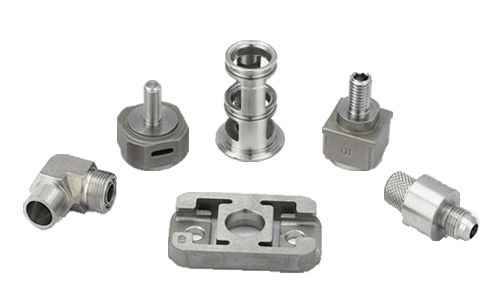
Get a quote now!
🧠 5. Best Practices for Accurate Carbon Steel Melting Point Assessment
To ensure reliable measurement and safe operation around the carbon steel melting point, manufacturers should:
- Use certified equipment calibrated to metallurgical standards (ASTM E794, ISO 11357-3)
- Analyze composition before testing — even small % changes affect melting behavior
- Preheat samples evenly to reduce thermal stress and gradient effects
- Control atmospheric conditions to minimize oxidation and contamination
- Cross-reference results with digital phase diagrams or steel grade databases
Most importantly, if you’re working with custom or critical parts (e.g., mining blades, valves, engine parts), always verify carbon steel melting point behavior under actual load and heat conditions.
Conclusion: The Real Meaning of Carbon Steel Melting Point in Engineering
The carbon steel melting point is not just a technical specification — it’s a foundational parameter that touches every part of the metalworking and manufacturing process.
From selecting the right steel grade to designing components for high-temperature operations, understanding how and when carbon steel transitions from solid to liquid helps you:
- Make better material decisions
- Improve process efficiency
- Reduce risk of defects or failure
- Maximize product life and safety
💡 Why This Knowledge Matters
In today’s global industrial landscape, where manufacturers are sourcing materials from across the world — including China, Vietnam, and India — understanding the carbon steel melting point is more than theory. It’s an economic and engineering advantage.
Whether you’re:
- A mechanical engineer designing for heavy equipment
- A procurement manager evaluating steel suppliers
- Or a production lead setting furnace parameters
…the ability to confidently apply carbon steel melting point data can elevate your entire operation.
🏁 Final Word
The carbon steel melting point isn’t just a thermal threshold — it’s a design constraint, a process requirement, and a performance benchmark. Know it, respect it, and you’ll not only avoid costly mistakes — you’ll build better products and stronger systems.



